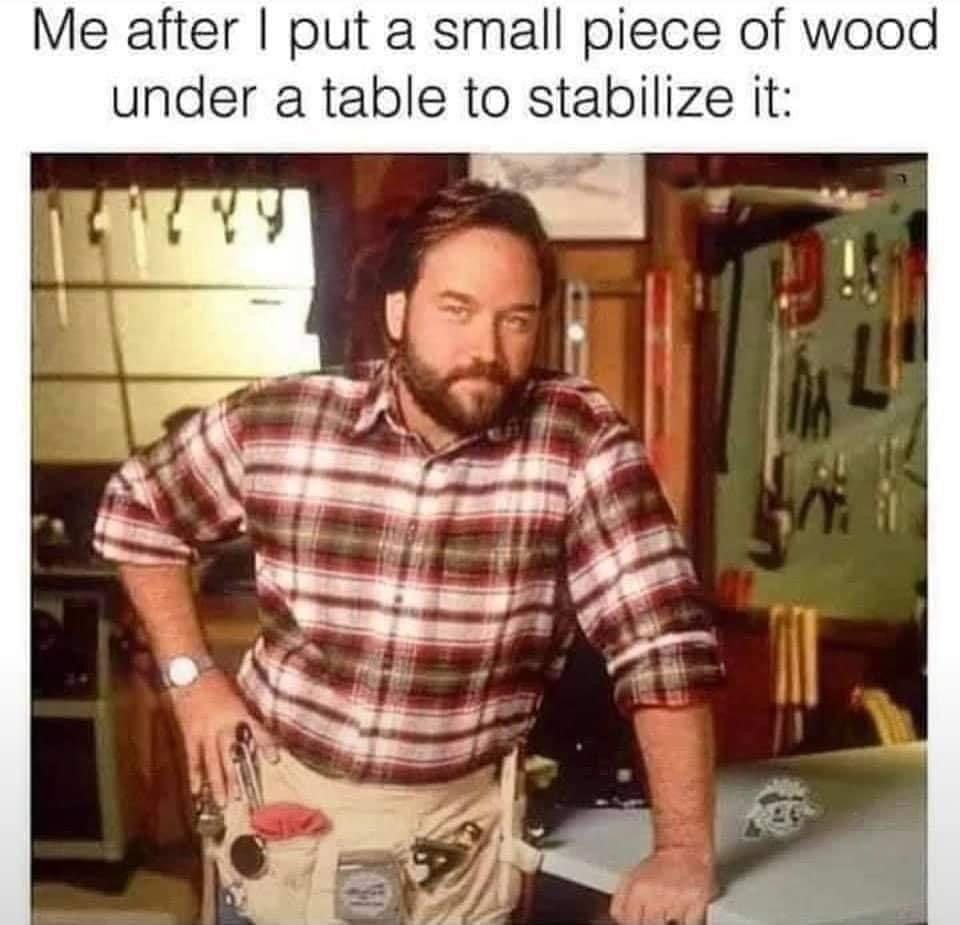this post was submitted on 14 Oct 2024
1023 points (99.6% liked)
memes
17365 readers
3723 users here now
Community rules
1. Be civil
No trolling, bigotry or other insulting / annoying behaviour
2. No politics
This is non-politics community. For political memes please go to !politicalmemes@lemmy.world
3. No recent reposts
Check for reposts when posting a meme, you can only repost after 1 month
4. No bots
No bots without the express approval of the mods or the admins
5. No Spam/Ads/AI Slop
No advertisements or spam. This is an instance rule and the only way to live. We also consider AI slop to be spam in this community and is subject to removal.
A collection of some classic Lemmy memes for your enjoyment
Sister communities
- !tenforward@lemmy.world : Star Trek memes, chat and shitposts
- !lemmyshitpost@lemmy.world : Lemmy Shitposts, anything and everything goes.
- !linuxmemes@lemmy.world : Linux themed memes
- !comicstrips@lemmy.world : for those who love comic stories.
founded 2 years ago
MODERATORS
you are viewing a single comment's thread
view the rest of the comments
view the rest of the comments

Do you know for a four legs table no matter the floor it sits on. There is always a rotational position where all it's legs touch ground at the same level.
For circular tables that are uneven you can just rotate the table until it sits right.
For square tables you may check the 90° angles to see if you are lucky.
Edit: This theory works with even legs + uneven (bumpy) floors. For your own safety do not test this the other way around.
That's just so wildly not true that I can't believe you didn't work it out for yourself in the time it took you to type that up.
To test your theory, envision a floor that is a perfectly level pane of glass. Then picture a 4 legged table where one leg is just an eighth inch shorter than the other 3.
You can spin that table all day and there's never going to be a position where it doesn't wobble.
Yep, it works the other way around. Even legs uneven floor.
Interesting that it works the other way...I assume that in that scenario, there's also no guarantee that the table would be anywhere close to level in whatever position eliminates wobble?
@daniskarma@lemmy.dbzer0.com is citing a mathematical proof that basically states if you have a table whose feet form 4 points on a flat rectangle, that table can find a stable resting spot anywhere on an uneven surface only by rotating the table, you do not have to translate the table, only rotate it.
Your example, while practical, breaks that model because it only works if the continuous surface is uneven and the four independent points are coplaner. If you make the reverse true, with a table that has 4 even legs and put it on a floor that can be described as two triangles (what you would get if you connected 3 even length legs and one shorter) you could rotate the table to find somewhere all four legs touch.
This is why it is very important for us woodworkers to make table and chair legs the same length, or failing that, add adjustable feet, becasue us carpenters don't know what the fuck we're doing.
Not really how that works, but I dig the enthusiasm!